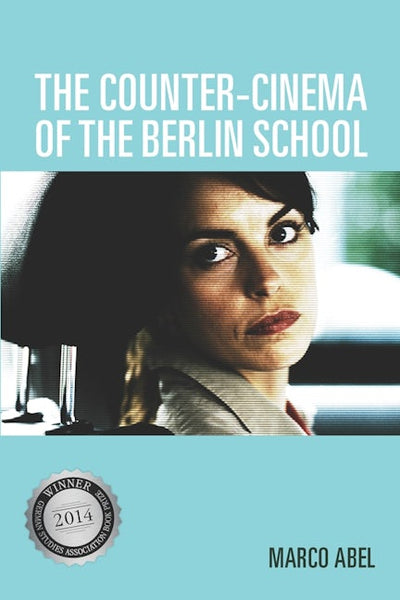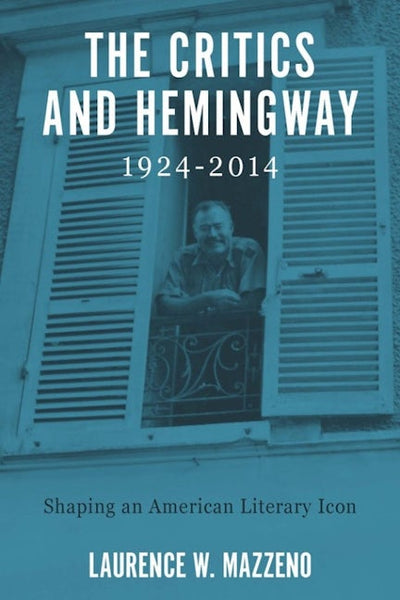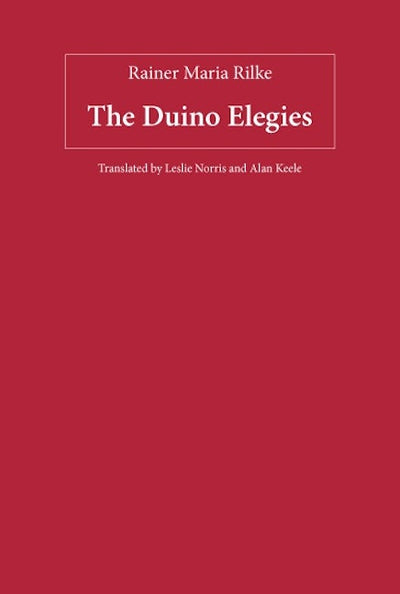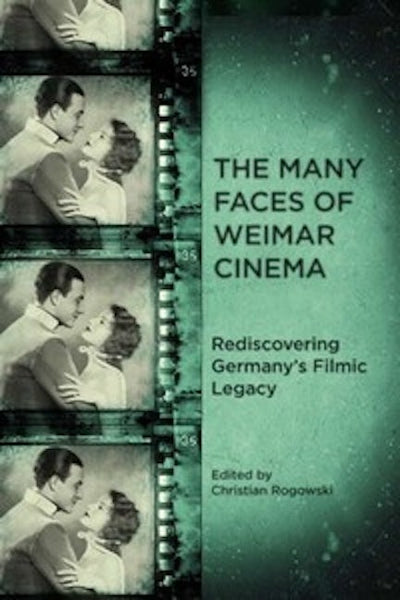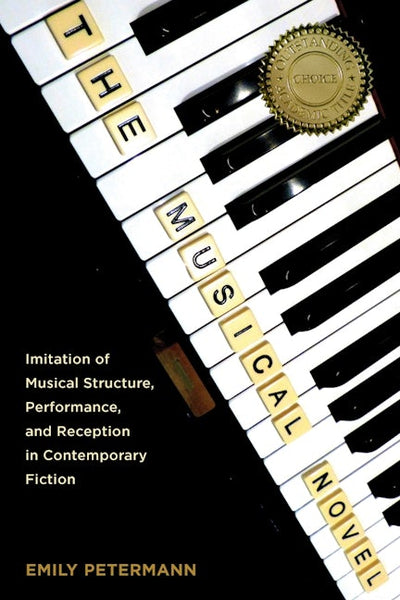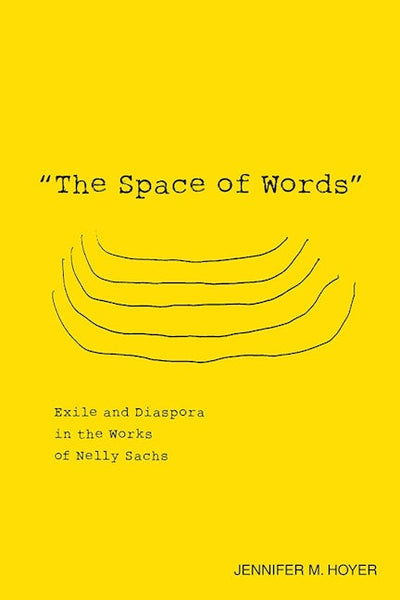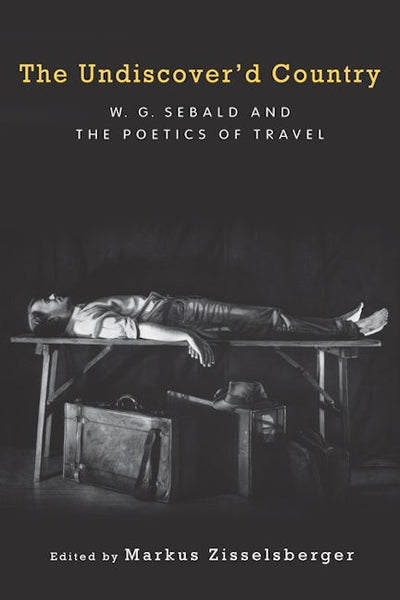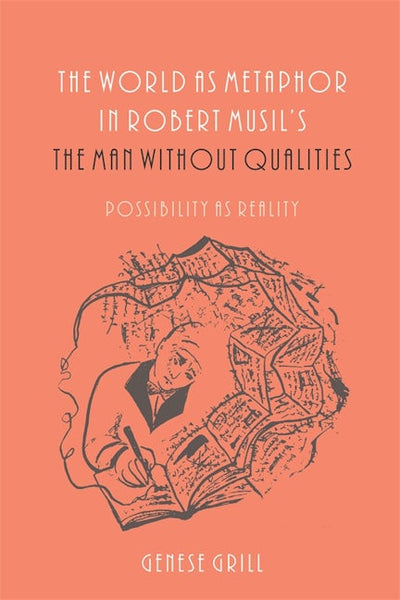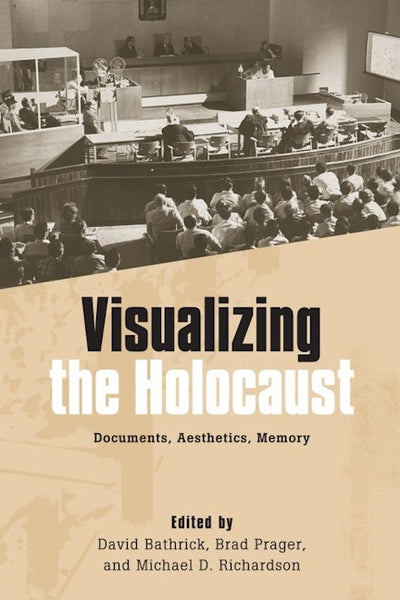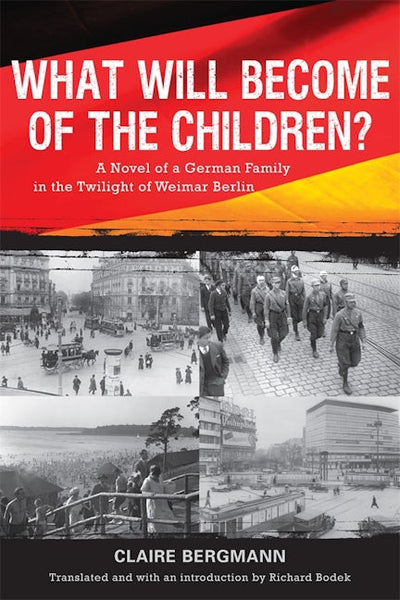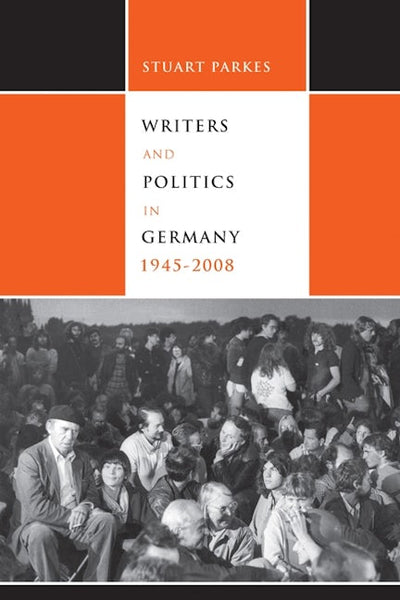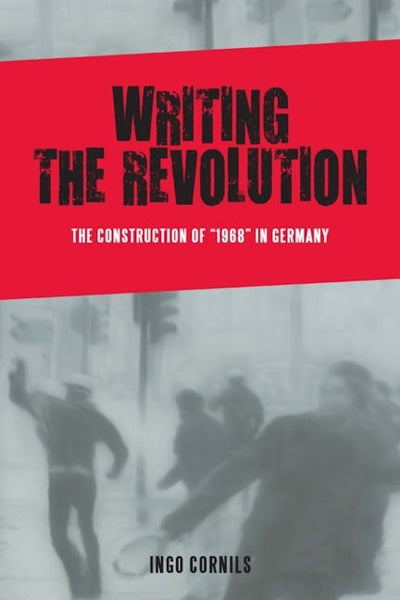-
Antiques & Collectibles
-
Architecture
-
Bibles
-
Biography & Autobiography
-
Body, Mind & Spirit
-
Comics & Graphic Novels
-
Crafts & Hobbies
-
Design
-
All collections
-
Foreign Language Study
-
Games & Activities
-
Gardening
-
House & Home
-
Humor
-
Language Arts & Disciplines
-
Literary Collections
-
Mathematics
-
Miscellaneous
-
Nature
-
Pets
-
Philosophy
-
Photography
-
Poetry
-
Reference
-
Self-Help
-
Study Aids
-
Transportation
-
True Crime
-
Antiques & Collectibles
-
Architecture
-
Bibles
-
Biography & Autobiography
-
Body, Mind & Spirit
-
Comics & Graphic Novels
-
Crafts & Hobbies
-
Design
-
All collections
-
Foreign Language Study
-
Games & Activities
-
Gardening
-
House & Home
-
Humor
-
Language Arts & Disciplines
-
Literary Collections
-
Mathematics
-
Miscellaneous
-
Nature
-
Pets
-
Philosophy
-
Photography
-
Poetry
-
Reference
-
Self-Help
-
Study Aids
-
Transportation
-
True Crime
The Brecht Yearbook / Das Brecht-Jahrbuch 37
Regular price $80.00 Save $-80.00
The Brecht Yearbook / Das Brecht-Jahrbuch 38
Regular price $80.00 Save $-80.00
The Brecht Yearbook / Das Brecht-Jahrbuch 39
Regular price $80.00 Save $-80.00
The Brecht Yearbook / Das Brecht-Jahrbuch 40
Regular price $80.00 Save $-80.00Now published for the International Brecht Society by Camden House under the Society's editorship, the Brecht Yearbook is the central scholarly forum for discussion of the life and work of Bertolt Brecht and of aspects of theater and literature that were of particular interest to him, especially the politics of literature and theater in a global context. The Yearbook welcomes a wide variety of perspectives and approaches, and, like Brecht himself, it is committed to the use value of literature, theater, and theory.
Volume 40 features new research on Brechtian concepts of temporality (Matthias Rothe) and the apparatus (Thomas Pekar), as well as articles on the "Bilder aus der Kriegsfibel" (Arnold Pistiak), the poem "Die Nachtlager" (Klaus-Dieter Krabiel), Brecht and Peruvian theater (Carlos Vargas-Salgado), early Brecht productions in Australia (Laura Ginters), and Brecht and Karl Kraus (Jost Hermand). Biographically oriented pieces focus on Brecht and the Chinese author Feng Zhi (Lin Cheng) and an unpublished letter to Brecht from 1918 (Jürgen Hillesheim). Special contents include a portfolio of drawings by DieterGoltzsche, with a brief introduction by the artist, a tribute to Sara Joffré, a brief set of texts related to the exchanges between Hanns Eisler and Hans Bunge, introduced by Sabine Berendse, and an open letter to Brecht from Hans-Thies Lehmann and Helene Varopoulou.
Theodore F. Rippey is Associate Professor of German at Bowling Green State University.

The Brecht Yearbook / Das Brecht-Jahrbuch 41
Regular price $80.00 Save $-80.00Now published for the International Brecht Society by Camden House, the Brecht Yearbook is the central scholarly forum for discussion of Bertolt Brecht's life and work and of topics of particular interest to Brecht, especially the politics of literature and of theater in a global context. It includes a wide variety of perspectives and approaches, and, like Brecht himself, is committed to the concept of the use value of literature, theater, and theory.
Volume 41 features an interview with longtime Berliner Ensemble actor Annemone Haase by Margaret Setje-Eilers. A special section on teaching Brecht, guest-edited by Per Urlaub and Kristopher Imbrigotta, includes articles on creative appropriation in the foreign-language classroom (Caroline Weist), satire in Arturo Ui and The Great Dictator (Ari Linden), performative discussion (Cohen Ambrose), Brecht for theater majors (Daniel Smith), teaching performance studies with the Lehrstück model (Ian Maxwell), Verfremdung and ethics (Elena Pnevmonidou), Brecht on the college stage (Julie Klassen and Ruth Weiner), and methods of teaching Brechtian Stückschreiben (Gerd Koch). Other research articles focus on Harry Smith's Mahagonny (Marc Silberman), inhabiting empathy in the contemporary piece Temping (James Ball), Brecht's appropriation of Kurt Lewin's psychology (Ines Langemeyer), and Brecht's collaborations with women, both across his career (Helen Fehervary) and in exile in Skovsbostrand (Katherine Hollander).
Editor Theodore F. Rippey is Associate Professor of German at Bowling Green State University.

The Brecht Yearbook / Das Brecht-Jahrbuch 42
Regular price $80.00 Save $-80.00Published for the International Brecht Society by Camden House, the Brecht Yearbook is the central scholarly forum for discussion of Brecht's life and work and of topics of particular interest to him, especially the politics of literature and of theater in a global context. It includes a wide variety of perspectives and approaches, and, like Brecht himself, is committed to the concept of the use value of literature, theater, and theory.
Volume42 features a selection of the papers given and protocols of the events held at the International Brecht Society's "Recycling Brecht" symposium at St. Hugh's College, Oxford, in June 2016. The theme of recycling is understood bothas a description of Brecht's own creative practice and as an activity applied to his works by others. The volume includes keynote papers by Hans-Thies Lehmann and Amal Allana on Brecht's reception of Antigone and on the reception and recycling of Brecht in India, respectively. Other papers are on a wide range of topics, from Brecht's own "recycling" of Shakespeare and others, through the reception of his own works in a range of contexts and by later writers, to contemporary works that may be understood as post-Brechtian. The final section, introduced by an extended interview with American playwright Tony Kushner, documents additional creative responses to the theme.
Volume co-editors Tom Kuhn and David Barnett are, respectively, Professor of Twentieth-Century German Literature at the University of Oxford and Professor of Theatre at the University of York. Managing Editor Theodore F. Rippey is Associate Professor of German at Bowling Green State University.

The Brecht Yearbook / Das Brecht-Jahrbuch 43
Regular price $80.00 Save $-80.00Published for the International Brecht Society by Camden House, the Brecht Yearbook is the central scholarly forum for discussion of Brecht's life and work and of topics of interest to him, especially the politics of literature and theater in a global context. It encourages a wide variety of perspectives and approaches and, like Brecht, is committed to the use value of literature, theater, and theory.
Volume 43 opens with a reconstruction of Brecht's two-chorus version of The Exception and the Rule (Reiner Steinweg) and continues with a selection of Helmut Heißenbüttel's reviews of Brecht's work. Four articles (by Christine Künzel, Carsten Mindt, Judith Niehaus,and Sebastian Schuller) address Brechtian aspects of Gisela Elsner's novels. The next two essays (by Hunter Bivens and Friedemann Weidauer) revisit Brecht's reflections on affect and empathy. Also included are papers from the 2016IBS "Recycling Brecht" Symposium: on Brecht's recycling of Lenin in his "neue Dramatik" (Joseph Dial), on Paul Celan as a reconfiguration of Brecht (Paul Peters), on Brecht's adaptation of Shakespeare's Coriolanus (MartinRevermann), and on Hilary Mantel's Brechtian reconfiguration of Thomas Cromwell (Markus Wessendorf). The volume features Richard Schröder's farewell lecture on Brecht's Life of Galileo and an essay by Ulrich Plass on BerndStegemann's allegedly Brechtian reclamation of critical realism. It concludes with Zhang Wei's interview with the Chinese dramaturg, playwright, and Brecht translator Li Jianming.
Editor Markus Wessendorf is a Professorin the Department of Theatre and Dance at the University of Hawai'i at Manoa in Honolulu.

The Brecht Yearbook / Das Brecht-Jahrbuch 44
Regular price $80.00 Save $-80.00Published for the International Brecht Society, the Brecht Yearbook is the central scholarly forum for discussion of Brecht's life and work and of topics of particular interest to him, especially the politics of literatureand of theater in a global context. It embraces a wide variety of perspectives and approaches and, like Brecht himself, is committed to the use value of literature, theater, and theory.
Volume 44 features the first publication of Günter Kunert's translation of Edgar Lee Masters's poem "The Hill" with handwritten annotations by Brecht. A special section, "Brecht's Dramatic Fragments," includes essays on the unresolved tension between individual and collectivist resistance in Fatzer, the fragmentary aesthetic of Fleischhacker, and the first English translation and performance of the David fragments. The next section, "Pure Joke: The Comedy of Theater since Brecht," features articles on the poetics of interruption in the epilogue to The Good Person of Szechwan, Heiner Müller's Hamletmachine as theater of affirmation, a reassessment of the harlequin and the chorus in post-Brechtian performance, and the performative gestures of quotation in contemporary reality-satire. The volume also includes essays on capitalist guilt and debt in The Debts of Mister Julius Caesar, Heiner Müller's "Keuneresque" interview strategies, the 1962 world premiere of The Threepenny Opera in Yiddish, and Brecht's reception of Mao Tse-tung in two of his poems. Contributors include Gerrit-Jan Berendse, André Fischer, Phoebe von Held, Nicholas E. Johnson, Christian Kirchmeier, Günter Kunert, Nikolaus Müller-Schöll, Stephan Pabst, Corina L. Petrescu, David Shepherd, Katrin Trüstedt, Uwe Wirth, Burkhardt Wolf, and Xue Song.
Editor Markus Wessendorf is aProfessor in the Department of Theatre and Dance at the University of Hawai'i at Manoa in Honolulu.

The Brecht Yearbook / Das Brecht-Jahrbuch 45
Regular price $80.00 Save $-80.00Published for the International Brecht Society by Camden House, the Brecht Yearbook is the central scholarly forum for discussion of Brecht's life and work and of topics of particular interest to him, especially the politics of literature and of theater in a global context. It includes a wide variety of perspectives and approaches and, like Brecht himself, is committed to the use value of literature, theater, and theory.
Volume 45 is the first of two volumes dedicated to the proceedings of the 16th Symposium of the IBS, "Brecht Among Strangers," held at Leipzig University in 2019. It features three sections: "Among Strangers–Brecht's Figures of Strangeness," "From East to West and Vice Versa–Geographic Interconnections," and "Global Estrangements–Brecht in the Age of Globalization." The articles cover a wide range of artists who engage(d) with Brecht and his work from such thematic perspectives — including Benno Besson, Arvind Gaur, Meng Jinghui, Mei Lan-fang, Peter Lorre, Koreya Senda, SIGNA, Konrad Swinarski, and Sergei Tretyakov — and link them to questions of alterity, dramaturgy, Gestus/gestures, pedagogy, realism, and singularity. The contributors include Gerda Baumbach, Aurélien Bellucci, Veronika Darian, Rico Dietzmeyer, Helen Fehervary, Zbigniew Feliszewski, Francesco Fiorentino, Anna Häusler, Günther Heeg, Eiichiro Hirata, Torben Ibs, Anja Klöck, Nikolaus Müller-Schöll, Astrid Oesmann, Patrick Primavesi, Tanja Prokic, Christoph Püngel, Kevin Rittberger, Sergei Romashko, Franziska Schubert, Melanie Selfe, Leonie Sowa, Kai Tuchmann, Lydia White, Noah Willumsen, and others.

The Brecht Yearbook / Das Brecht-Jahrbuch 46
Regular price $80.00 Save $-80.00Published for the International Brecht Society by Camden House, the Brecht Yearbook is the central scholarly forum for discussion of Brecht's life and work and of topics of particular interest to him, especially the politics of literature and of theater in a global context. It, like Brecht himself, is committed to the concept of the use value of literature, theater, and theory.
This is the second volume dedicated to the proceedings of the 16th Symposium of the IBS, held at Leipzig University in 2019. The contributions discuss artists whose work intersects with Brecht's from three thematic perspectives: Brecht in a global age, women and Brecht, and Brecht's learning plays. The artists include Utpal Dutt, Elisabeth Hauptmann, Elfriede Jelinek, Peter Konwitschny, Siegfried Kracauer, Tom Kühnel, Jürgen Kuttner, Heiner Müller, Rimini Protokoll, Margarete Steffin, Teatro Due Mondi, Teatro Máquina, Tom Tykwer, and Hella Wuolijoki. The articles cover a broad range of genres and topics, such as crime and detective fiction; neo-noir television series; the learning play according to and after Brecht; theater pedagogy; the migration dilemma; and post-dramatic, refugee, and transcultural theater.

The Brecht Yearbook / Das Brecht-Jahrbuch 47
Regular price $80.00 Save $-80.00The Brecht Yearbook is the central scholarly forum for discussion of Brecht's life and work and of topics of particular interest to him, especially the politics of literature and of theater in a global context. Embracing a wide variety of perspectives and approaches, like Brecht himself it is committed to the use value of literature, theater, and theory.
Volume 47 features the special section "Brecht Post-2020: Fascism and Misinformation, Resistance and Intersectionality," with articles on Fear and Misery of the Third Reich and today's surge in autocracy, on an adaptation of The Measures Taken and Brazil's right-wing turn, on Brecht's exile poetry as a model for truth in an era of fake news, and on the relevance of Brecht's late-1940s adaptations of plays about resistance, among others. Varied new research on Brecht follows: essays on the 1919 Spartacist uprising's influence on Drums in the Night, on the anti-Stalinist critique in the prologue to The Caucasian Chalk Circle, on a recent Korean production of the same play in traditional Changgeuk style, and on Mei Lanfang's performances in Moscow in 1935 that Brecht most likely attended. The final essay considers Brecht's unfinished exile poem "Garden in progress" and the inherent incompletion of artworks and historical processes.

The Brecht Yearbook / Das Brecht-Jahrbuch 48
Regular price $80.00 Save $-80.00The Brecht Yearbook, published on behalf of the International Brecht Society, is the central scholarly forum for the study of Brecht's life and work and of topics relevant to him. Volume 48 opens with an article on the research that informed the 2022 exhibition Brecht's Paper War. The next section examines Brecht's and Heiner Müller's engagement with modern living: from the housing question in the 1920s to the dramaturgical function of furniture to dialectical stage-auditorium configurations in the early GDR. The following section on "Brecht Post-2020" explores dramaturgical approaches to the learning play under pandemic conditions as well as the "spectrological" aspects of Drums in the Night. Additional new research includes essays on the critical edition of Brecht's notebooks, his reception in fascist Italy, the ambivalence of the heroic in his work, the prioritization of political parable over avant-garde aesthetics in Round Heads and Pointed Heads, boxing as inspiration for epic theater, Hegelian aspects of Refugee Conversations and The Measures Taken, and the working alliance of Brecht and Kurt Weill.
Edited by Markus Wessendorf. Contributors: Fanti Baum, Luke Beller, Manuel Clancett, Daniel Cuonz, Fritz Hennenberg, Matthew Hines, Alba Knijff, Sophie König, Grischa Meyer, Marie Millutat, Zafiris Nikitas, Cornelia Ortlieb, Matthias Rothe, Kumars Salehi, Francesco Sani, Stephan Strunz, Lara Tarbuk, Raffaella Di Tizio, Julia Weber, Marten Weise, Noah Willumsen, Claus Zittel.

The Brecht Yearbook / Das Brecht-Jahrbuch 49
Regular price $80.00 Save $-80.00Volume 49 features the proceedings of the 17th IBS Symposium, which took place at the universities of Tel Aviv, Haifa, and Jerusalem in December 2022 under the motto "Bertolt Brecht in Dark Times: Racism, Political Oppression, and Dictatorship." It contains three thematic sections: "Brecht's Work in Israeli and Palestinian Contexts," "Brecht and Becoming, Futurity, and Thanatopolitics," and "(Anti-) Heroism and Resistance in Dark Times." The contributions discuss artists and theater companies who have engaged with Brecht's work or can be associated with it under these thematic aspects, including David Avidan, the Habima National Theater, Jindřich Honzl, the Jenin Freedom Theater, Ghassan Kanafani, Tetsuo Kogawa, Yosef Milo, Omri Nitzan, Manuel Chaves Nogales, the Ohel Theater, the Prague Liberated Theater, Samìh al-Qāsim, Johan Taub, Jiři Voskovec, Günther Weisenborn, Jan Werich, and Arnold Zweig.
Contributors are Fanti Baum, Micha Braun, Bettina Christner, Manuel Clancett, Amir Farjoun, Leon Gabriel, Torben Ibs, Gad Kaynar-Kissinger, Ferdinand Klüsener, Jan Kühne, Joachim Lucchesi, Nikolaus Müller-Schöll, Riki Ophir, Avraham Oz, Rebecca Rovit, Julia Schade, and Florian Vaßen. Book Reviews edited by Lydia J. White. Reviewers: Stephen Brockmann, Ann M. Fox, Hasibe Kalkan, Sabine Kebir, Yu Wei Jie, and Gregor Schwering.

The Buchenwald Child
Regular price $37.95 Save $-37.95At the notorious Buchenwald concentration camp, communist prisoners organized resistance against the SS and even planned an uprising. They helped rescue a three-year-old Jewish boy, Stefan Jerzy Zweig, from certain death in the gas chambers. After the war, his story became a focus for the German Democratic Republic's celebration of its resistance to the Nazis.
Now Bill Niven tells the true story of Stefan Zweig: what actually happened to him in Buchenwald, how he was protected, and at what price. He explores the (mis)representation of Zweig's rescue in East Germany and what this reveals about that country's understanding of its Nazi past. Finally he looks at the telling of the Zweig rescue story since German unification: a story told in the GDR to praise communists has become a story used to condemn them.
Bill Niven is Professor of Contemporary German History at the Nottingham Trent University, UK.

The Canadian Short Story
Regular price $49.95 Save $-49.95Beginning in the 1890s, reaching its first full realization by modernist writers in the 1920s, and brought to its heyday during the Canadian Renaissance starting in the 1960s, the short story has become Canada's flagship genre. Itcontinues to attract the country's most accomplished and innovative writers today, among them Margaret Atwood, Mavis Gallant, Alice Munro, Clark Blaise, and many others. Yet in contrast to the stature and popularity of the genreand the writers who partake in it, surprisingly little literary criticism has been devoted to the Canadian short story. This book redresses that imbalance by providing the first collection of critical interpretations of thirty well-known and often-anthologized Canadian short stories from the genre's beginnings through the twentieth century. A historical survey of the genre introduces the volume and a timeline comparing the genre's development in Canada, the US, and Great Britain completes it. Geared both to specialists in and students of Canadian literature, the volume is of particular benefit to the latter because it provides not only a collection of interpretations, but a comprehensive introduction to the history of the Canadian short story.
Contributors: Reingard M. Nischik, Martina Seifert, Heinz Antor, Julia Breitbach, Konrad Gross, Paul Goetsch, Dieter Meindl, Nina Kück, Stefan Ferguson, Rudolf Bader, Fabienne C. Quennet, Martin Kuester, Jutta Zimmermann, Sylvia Mergenthal, Caroline Rosenthal, Wolfgang Klooss, Lothar Hönnighausen, Heinz Ickstadt, Heinz Ickstadt, Gordon Bölling, Christina Strobel, Waldemar Zacharasiewicz, Nadja Gernalzick, Eva Gruber, Brigitte Glaser, Georgiana Banita.
Reingard M. Nischik is Professor of American Literature at the University of Konstanz, Germany.

The Cat Has Nine Lives
Regular price $24.95 Save $-24.95Acclaimed as postwar Germany's first feminist film, Ula Stöckl's The Cat Has Nine Lives disappeared from view shortly after its 1968 premiere when its distributor went bankrupt. Although it laid the groundwork for the flourishing feminist cinema that emerged in West Germany and beyond during the 1970s, Stöckl's vibrant film long remained largely unknown. Yet it is as fresh and relevant today as it was when it debuted half a century ago. Revived at the 2019 Berlin International Film Festival (Berlinale), The Cat Has Nine Lives is now available for the first time on DVD with English subtitles. Posing the question, "Women have never had as many possibilities to do what they want as they have today, but do they know what they want?," Stöckl's film follows the intertwined stories of five characters to explore the possibilities for and limitations on women's subjectivity, desire, friendship, work, and artistic expression in a society defined by gender inequality. Restoring this singular film to its rightful place as a German film classic, Hester Baer argues that The Cat Has Nine Lives forms an important aesthetic and theoretical precursor to the unfolding cinefeminism of later decades.

The Counter-Cinema of the Berlin School
Regular price $39.95 Save $-39.95WINNER: 2014 German Studies Association Award
The contemporary German directors collectively known as the "Berlin School" constitute the most significant filmmaking movement to come out of Germany since the New German Cinema of the 1970s, not least because their films mark the emergence of a new film language. The Berlin School filmmakers, including Christian Petzold, Thomas Arslan, Angela Schanelec, Christoph Hochhäusler, Ulrich Köhler, Benjamin Heisenberg, Maren Ade, and Valeska Grisebach, are reminiscent of the directors of the New German Autorenkino and of French cinéma des auteurs of the 1960s.
This is the first book-length study of the Berlin School in any language. Its central thesis - that the movement should be regarded as a "counter-cinema" - is built around the unusual style of realism employed in its films, a realism that presents images of a Germany that does not yet exist. Abel concludes that it is precisely how these films' images and sounds work that renders them political: they are political not because they are message-driven films but because they are made politically, thus performing a "redistribution of the sensible" - a direct artistic intervention in the way politics partitions ways of doing and making, saying and seeing.
Marco Abel is Professor of English and Film Studies at the University of Nebraska, Lincoln.

The Critical Life of Toni Morrison
Regular price $38.95 Save $-38.95Winner of the Toni Morrison Society Book Prize for Best Single-Authored Book, 2019-2022
Toni Morrison (1931-2019) is the most important American novelist since Faulkner, the most significant American woman writer since Dickinson, and the most widely read African American public intellectual of the last half century. Her influence as a writer, critic, editor, teacher, and scholar is profound: she changed the face of literature and literary criticism in the US, if not worldwide. Yet despite the ever-expanding field of Morrison scholarship, no book tracing her critical reception has existed, until now. The book is as much a cultural history of America as a reception history of an American writer.
Morrison worked brilliantly in many genres - fiction, of course (novels and short stories); drama/staged performance; poetry; non-fiction on historical, social, and political issues; and critical writings on the work of others and on her own work. She generated a literary-critical methodology that recognizes and embraces rather than ignores the African American presence in US literature, and thus transformed American academics' attitude toward American letters. The story of Morrison's achievement in making a home for herself - and for other women and people of color - in the stony bedrock of "white male" American literature is the subject of this book.

The Critical Reception of Henry James
Regular price $29.95 Save $-29.95Although some of Henry James's contemporary critics deemed him just short of a great writer, history has elevated him to indisputable preeminence in the American canon. Linda Simon chronicles and analyzes James criticism beginningwith contemporary newspaper and magazine reviews and ending with current academic criticism. The story begins in the 1870s, when critics saw James's works as mirrors of American identity and sought to establish him in the nation's evolving canon. James himself worked to secure that place with his prefaces to the standard edition of his works; Simon analyzes criticism about those prefaces. She also shows how James's reputation became contested after his death: praised by some critics for psychological insight and stylistic innovation, he was dismissed by others as socially and politically irrelevant. But beginning in the 1940s, such critics as Trilling, Rahv, Leavis, and, most influentially, Leon Edel secured James's place at the forefront of the American canon. More recently, James scholarship has focused on sexuality and gender, race and morality, and the nature of consciousness; critical trends Simon also considers. This book, the only comprehensive overview of James criticism over the past 140 years, helps readers understand the paths that that criticism has taken and how scholars and critics have built upon past work.
Linda Simon is Professor Emerita of English at Skidmore College and Editor-in-Chief of William James Studies. Her books include Genuine Reality: A Life of William James, which was a New York Times Notable Book of 1998.

The Critical Reception of James Baldwin, 1963-2010
Regular price $29.95 Save $-29.95James Baldwin is a widely taught and anthologized author. His short story "Sonny's Blues" remains a perennial favorite in literature anthologies, and all of his essay collections and novels are still in print. His first essay collection, Notes of a Native Son, is a seminal work that led a new generation of African American writers from beneath the shadow of Richard Wright. The Fire Next Time is widely held as one of the most profound and accurate articulations of black consciousness during the Civil Rights movement. It is difficult to imagine teaching a survey of African American literature or considering the development of black intellectual thought in the twentiethcentury without mentioning Baldwin.
For more than half a century, readers and critics alike have agreed that Baldwin is a major African American writer. What they do not agree on is why. Because of his artistic and intellectual complexity, his work resists easy categorization, and Baldwin scholarship, consequently, spans the critical horizon. Conseula Francis's book examines the major divisions in Baldwin criticism, paying particular attention to theway each critical period defines Baldwin and his work for its own purposes.
Conseula Francis is Professor of English and Associate Provost for Curriculum and Institutional Resources at the College of Charleston.

The Critical Writings of Ingeborg Bachmann
Regular price $39.95 Save $-39.95The Austrian Ingeborg Bachmann (1926-1973) is one of the most important postwar writers in German. Her work is enmeshed with the intellectual and cultural developments of the period: she was influenced by European modernism in the early 1950s, experienced the sweeping changes of the 60s, and worked until her death in 1973 on her celebrated and sprawling "Todesarten" (Ways of Death) project, on the decades following National Socialism. Her poetry and prose confront what she called "the sickness of our time": the subtle connection between patriarchal society, catastrophic history in the form of National Socialism, and the subjugation of the Other. Even during her lifetime, Bachmann achieved a prominent position in postwar German-language literature. Interest in her literary output increased sharply in the early 1980s with the publication of the first edition of her works, and has been growing steadily ever since.
Bachmann's impact on German literature is comparable to that of Virginia Woolf on English literature. Just as an appreciation of Woolf's poetic oeuvre, and that of other women writers, is impossible without reference to "A Room of One's Own," the critical writings of Bachmann enhance our awareness of not only her own works, but also those of many other writers, philosophers, and artists. As the only translation of Bachmann's essays, lectures, speeches, and theoretical texts into English, The Critical Writings will be a valuable tool for students of Comparative Literature and German literature and cultural studies.

The Critics and Hemingway, 1924-2014
Regular price $38.95 Save $-38.95Hemingway burst on the literary scene in the 1920s with spare, penetrating short stories and brilliant novels. Soon he was held as a standard for modern writers. Meanwhile, he used his celebrity to create a persona like the stoic,macho heroes of his fiction. After a decline during the 1930s and 1940s, he came roaring back with The Old Man and the Sea in 1952. Two years later he received the Nobel Prize.
While his popularity waxed and waned during his lifetime, Hemingway's reputation among scholars remained strong as long as traditional scholarship dominated. New approaches beginning in the 1960s brought a sea change, however, finding grave fault with his work and making him a figure ripe for vilification. Yet during this time scholarship on him continued to appear. His works still sell well, and several are staples on high-school and college syllabi. A new scholarly edition of his letters is drawing prominent attention, and there is a resurgence in scholarly attention to - and approbation for - his work. Tracing Hemingway's critical fortunes tells us something about what we value in literature and why reputations rise and fall as scholars find new ways to examine and interpret creative work.

The Dickens Industry
Regular price $39.95 Save $-39.95Undoubtedly the best-selling author of his day and well loved by readers in succeeding generations, Charles Dickens was not always a favorite among critics. Celebrated for his novels advocating social reform, for half a century after his death he was ridiculed by those academics who condescended to write about him. Only the faithful band of devotees who called themselves Dickensians kept alive an interest in his work. Then, during the Second World War, hewas resurrected by critics, and was soon being hailed as the foremost writer of his age, a literary genius alongside Shakespeare and Milton. More recently, Dickens has again been taken to task by a new breed of literary theoristswho fault his chauvinism and imperialist attitudes. Whether he has been adored or despised, however, one thing is certain: no other Victorian novelist has generated more critical commentary. This book traces Dickens's reputation from the earliest reviews through the work of early 21st-century commentators, showing how judgments of Dickens changed with new standards for evaluating fiction. Mazzeno balances attention to prominent critics from the late 19th century through the first three quarters of the 20th with an emphasis on the past three decades, during which literary theory has opened up new ways of reading Dickens. What becomes clear is that, in attempting to provide fresh insight into Dickens's writings, critics often reveal as much about the predilections of their own age as they do about the novelist.
Laurence W. Mazzeno is President Emeritus of Alvernia University, Reading, Pennsylvania.

The Duino Elegies
Regular price $29.95 Save $-29.95
The Golem, How He Came into the World
Regular price $24.95 Save $-24.95Actor and director Paul Wegener released his 1920 silent film The Golem, How He Came into the World in the aftermath of Germany's defeat in World War I. The film's innovative cinematography, lighting effects, modernist architectural design, and thrilling plot all led contemporaneous viewers and critics to pronounce that Germany had finally succeeded on the film front if not on the battlefield. The Golem, How He Came into the World, Wegener's third golem film, narrates how Rabbi Loew, here an astrologer and sorcerer as well as a spiritual leader, forms and animates an artificial clay anthropoid in order to save the Prague Jewish community from an edict of expulsion. Maya Barzilai situates the 1920 film in the historical and social context of post-World War I Germany, taking into consideration Wegener's violent and traumatic service on the Western front. She closely analyzes the film's expressive sculptural aesthetic, enhanced through poetic cinematography, arguing that Wegener's animation of cinema also served a postwar ethical purpose: revealing the human face of the golem and offering a redemptive escape from the the film's Christian-Jewish conflict through nature on the one hand and Zionism on the other.

The Last Laugh
Regular price $24.95 Save $-24.95An undisputed masterpiece of silent cinema, F. W. Murnau's The Last Laugh (1924) stars the larger-than-life Emil Jannings as a proud hotel porter who is demoted to lowly washroom attendant. One worker's misfortune becomes a tragic turning point in a social drama as much about the struggling Weimar Republic, which had just overcome several years of social, political, and economic instability, as about its working-class citizens. At once clinging to the symbols of the old order while helplessly thrust into an unforgiving modern world, Jannings's fallen porter embodies the contradictions of this transitional moment for the young democracy. Samuel Frederick shows us that Murnau's film is similarly transitional: born at the crossroads between the Expressionist style of the early 1920s and the emerging aesthetics of New Objectivity, it is both soberly realistic and oneirically distorted. With only one intertitle, The Last Laugh's flow of images is complemented by cinematographer Karl Freund's innovative mobile camera, which, "unchained" from the tripod, swims effortlessly through the film's different urban spaces. Here, inanimate objects become charged with potency and architecture is animated, conveying both allure and danger. Frederick's incisive analysis of the film foregrounds the visual dynamism of its technological and aesthetic experimentation while also pursuing the ethical implications of its central figure's downfall.

The Long Shadow of the Past
Regular price $36.95 Save $-36.952018 CHOICE Outstanding Academic Title
The process of coming to terms with its National Socialist past has been a long and difficult one in Austria. It is only over the past thirty years that the country's view of its role during the Third Reich has shifted decisively from that of victimhood to complicity, prompted by the Waldheim affair of 1986-1988. Austria's writers, filmmakers, and artists have been at the center of this process, holding upa mirror to the country's present and drawing attention to a still disturbing past.
Katya Krylova's book undertakes close readings of key contemporary Austrian literary texts, films, and memorials that treat the legacy of Nazism and the Holocaust. The analysis focuses on texts by Robert Schindel, Elfriede Jelinek, and Anna Mitgutsch, documentary films by Ruth Beckermann and by Margareta Heinrich and Eduard Erne, as well as recent memorial projects inVienna, examining what these reveal about the evolving memory culture in contemporary Austria. Aimed at a broad readership, the book will be a key reference point for university teachers, undergraduates, and postgraduates engagedin scholarship on contemporary Austrian literature, film, and visual culture, and for general readers interested in confrontations with the National Socialist past in the Austrian context.
KATYA KRYLOVA is Lecturer in German, Film and Visual Culture at the University of Aberdeen, UK. The Long Shadow of the Past is her second book.

The Many Faces of Weimar Cinema
Regular price $39.95 Save $-39.95Traditionally, Weimar cinema has been equated with the work of a handful of auteurist filmmakers and a limited number of canonical films. Often a single, limited phenomenon, "expressionist film," has been taken as synonymous with the cinema of the entire period. But in recent decades, such reductive assessments have been challenged by developments in film theory and archival research that highlight the tremendous richness and diversity of Weimar cinema. This widening of focus has brought attention to issues such as film as commodity; questions of technology and genre; transnational collaborations and national identity; effects of changes in socioeconomics and gender roles onfilm spectatorship; and connections between film and other arts and media. Such shifts have been accompanied by archival research that has made a cornucopia of new information available, now augmented by the increased availability of films from the period on DVD. This wealth of new source material calls for a re-evaluation of Weimar cinema that considers the legacies of lesser-known directors and producers, popular genres, experiments of the artistic avant-garde, and nonfiction films, all of which are aspects attended to by the essays in this volume.
Contributors: Ofer Ashkenazi, Jaimey Fisher, Veronika Fuechtner, Joseph Garncarz, Barbara Hales, Anjeana Hans, Richard W.McCormick, Nancy P. Nenno, Elizabeth Otto, Mihaela Petrescu, Theodore F. Rippey, Christian Rogowski, Jill Smith, Philipp Stiasny, Chris Wahl, Cynthia Walk, Valerie Weinstein, Joel Westerdale.
Christian Rogowski is Professor of German at Amherst College.

The Marriage of Maria Braun
Regular price $24.95 Save $-24.95The Marriage of Maria Braun is the most popular film by the enfant terrible director Rainer Werner Fassbinder, the leading exponent of the "New German Cinema" of the early sixties to early eighties. It exemplifies his use and abuse of the genre of melodrama. Set in the immediate postwar period and centered around a strong female protagonist, Maria Braun (1978) was the first film in a trilogy that attempts to work through West Germany's fraught past and the legacy of Nazi Germany through the eyes of characters marginalized by their gender, race, sexuality, or (dis)ability. Maria attempts to navigate the poverty and sexism of the immediate postwar years by making her relationships with men, including the Black American G.I., Bill, as beneficial as possible. In the end, she discovers she has been a pawn in a power game between her husband, Hermann, for whom she has been pining while he has been in prison, and her lover, the industrialist Oswald. Yet Maria is also complicit in racism and white patriarchy, a fact that scholarship on the film has barely registered. In her new reading, Priscilla Layne draws on archival research, Critical Race Theory, Black Feminist Thought, and Critical Whiteness Studies to expand on the role of race and gender in the film.

The Multiple Worlds of Pynchon's Mason & Dixon
Regular price $36.95 Save $-36.95Thomas Pynchon's 1997 novel Mason & Dixon marked a deep shift in Pynchon's career and in American letters in general. All of Pynchon's novels had been socially and politically aware, marked by social criticism and a profound questioning of American values. They have carried the labels of satire and black humor, and "Pynchonesque" has come to be associated with erudition, a playful style, anachronisms and puns -- and an interest in scientific theories, popular culture, paranoia, and the "military-industrial complex." In short, Pynchon's novels were the sine qua non of postmodernism; Mason & Dixon went further, using the same style, wit, and erudition to re-create an 18th century when "America" was being formed as both place and idea. Pynchon's focus on the creation of the Mason-Dixon Line and the governmental and scientific entities responsible for it makes a clearer statement than any of his previous novels about the slavery and imperialism at the heart of the Enlightenment, as he levels a dark and hilarious critique at this America. This volume of new essays studies the interface between 18th- and 20th-century cultureboth in Pynchon's novel and in the historical past. It offers fresh thinking about Pynchon's work, as the contributors take up the linkages between the 18th and 20th centuries in studies that are as concerned with culture as withthe literary text itself.
Contributors: Mitchum Huehls, Brian Thill, Colin Clarke, Pedro Garcia-Caro, Dennis Lensing, Justin M. Scott Coe, Ian Copestake, Frank Palmeri.
Elizabeth Jane Wall Hinds is Professor and Chair of the English Department at SUNY Brockport.

The Musical Novel
Regular price $29.95 Save $-29.95Analyzes two groups of "musical novels" -- novels that take music as a model for their construction -- including jazz novels by Toni Morrison and Michael Ondaatje, and novels based on Bach's Goldberg Variations.
What is a "musical novel"? This book defines the genre as musical not primarily in terms of its content, but in its form. The musical novel crosses medial boundaries, aspiring to techniques, structures, and impressions similar tothose of music. It takes music as a model for its own construction, borrowing techniques and forms that range from immediately perceptible, essential aspects of music (rhythm, timbre, the simultaneity of multiple voices) to microstructural (jazz riffs, call and response, leitmotifs) and macrostructural elements (themes and variations, symphonies, albums). The musical novel also evokes the performance context by imitating elements of spontaneity that characterize improvised jazz or audience interaction.
The Musical Novel builds upon theories of intermediality and semiotics to analyze the musical structures, forms, and techniques in two groups of musical novels, which serve as case studies. The first group imitates an entire musical genre and consists of jazz novels by Toni Morrison, Albert Murray, Xam Wilson Cartiér, Stanley Crouch, Jack Fuller, Michael Ondaatje, and Christian Gailly. The secondgroup of novels, by Richard Powers, Gabriel Josipovici, Rachel Cusk, Nancy Huston, and Thomas Bernhard, imitates a single piece of music, J. S. Bach's Goldberg Variations.
Emily Petermann is Assistant Professor of American Literature at the University of Konstanz.

The New German Jewish Literature
Regular price $36.95 Save $-36.95Eighty years after the Holocaust, it is now possible to speak of a New German Jewish Literature. Emerging out of a community that, following the arrival of more than 200,000 people of Jewish ancestry from the former Soviet Union, is now vastly larger, increasingly diverse, and culturally vibrant, German Jewish writers are re-articulating what it means to be Jewish in the "land of the perpetrators." More generally, they are also rethinking Jewish values and Jewish solidarity against the backdrop of global events and trends such as the resurgence of antisemitism, the Israeli-Palestinian conflict, and growing intolerance toward ethnic, religious, and sexual minorities.
Stuart Taberner's book provides the first comprehensive account of the tension between Jewish particularism and Jewish universalism that characterizes this New German Jewish Literature. To what extent should Jewish identity be focused on the "Jewishness" of the Jewish experience, including the Holocaust? Or does "Jewish purpose" reside in expressing solidarity with persecuted minorities everywhere? Taberner argues that this new literature presents an aesthetically engaging and politically nuanced deliberation on Holocaust memory, on worldliness, and on solidarity - with sometimes surprising and radical implications for modern-day German Jewish and Jewish identity. He also examines authors' responses to the Hamas attack on Israel of October 7, 2023, and speculates about the future of German Jewish writing.
This book is available as Open Access under the Creative Commons license CC BY-NC-ND.

The Novels of Erich Maria Remarque
Regular price $37.95 Save $-37.95Erich Maria Remarque is a writer of great popularity who has rightly been described as a "chronicler of the twentieth century." He is both a German writer and a genuinely international one. Although he spent much of his life in exile from Germany, most of his novels reflect its twentieth-century history: the two world wars and the Weimar and Nazi regimes, and especially their effects on the individual. His portrayals of the lives of refugees from Nazi Germany are especially vivid. His themes are universal, dealing with human relationships, with love in particular, and with the provisional nature of life. Often seen as a one-novel writer due to the immense success of All Quiet onthe Western Front, Remarque wrote many other novels, major works that have nearly all been filmed and have remained popular. Nor should it be ignored that his works are above all else immensely readable: not a negligible criterion. This new study of Remarque's novels treats them as a chronicle of the century, but also looks at them as works that go beyond the reflection of historical events.
Brian Murdoch is Emeritus Professor of German atthe University of Stirling, Scotland.

The Patriot
Regular price $24.95 Save $-24.95Alexander Kluge achieved his breakthrough at the 1966 Venice Biennale with his first feature, Yesterday Girl (Abschied von gestern), but it is arguably his 1979 film The Patriot (Die Patriotin) that first embodied the great heights his storytelling could reach. Titled after its heroine, the history teacher Gabi Teichert, The Patriot is, however, much more than just a curious story about a headstrong pedagogue intent on teaching kids a version of German history that does not end in war and death: it is one of the finest examples of Kluge's exploration of the poetic force of Frankfurt School Critical Theory. This book pursues The Patriot's conception as a cinematic extension of the theoretical agenda that Kluge and social philosopher Oskar Negt began developing just as the Frankfurt School's first generation was ending. It will guide twenty-first-century English-language readers past superficial interpretations of the film's engagement with German history. By asking how and why The Patriot brings the twin concepts of history and obstinacy - the human propensity to resist capitalism's forces of expropriation and alienation - to the screen, this book revitalizes Kluge's film for the new millennium.

The Red Vienna Sourcebook
Regular price $59.95 Save $-59.95The current blockbuster German TV series Babylon Berlin introduces viewers to the tumultuous period in German history known as the Weimar Republic. Critics have praised the series for its relevance to the present: it showsdark populist forces undermining a fragile democracy. While Weimar Germany makes a fascinating backdrop, its story does not inspire much hope for our present-day political and cultural woes.
A fascinating contrast is the Austrian capital, Vienna. After the First World War the former imperial city elected a Social Democratic majority that persisted into the 1930s. "Red Vienna" undertook large-scale experiments in public housing, hygiene, and education,while maintaining a world-class presence in music, literature, art, culture, and science. Though Red Vienna eventually fell victim to fascist violence, it left a rich legacy with potential to inform our own tumultuous times.
The Red Vienna Sourcebook provides scholars and students with an encyclopedic selection of key documents from the period, carefully translated and introduced. The thirty-six chapters include primary works from canonical names such as Sigmund Freud and Arthur Schnitzler but also introductions to lesser-known figures such as sociologist Käthe Leichter and health-policy pioneer Julius Tandler. The documents will be of interest to such diverse disciplines as economics, architecture, music, film history, philosophy, women's studies, sports and body culture, and Jewish studies.

The Shifting Fortunes of Wilhelm Raabe
Regular price $75.00 Save $-75.00Wilhem Raabe (1831-1910), the most gifted German novelist between Goethe and Fontane, was a kind of German Victorian writer, a counterpart to Dickens and Thackeray, by whom he was profoundly influenced. The reassessment and upgrading of his literary achievement has been one of the liveliest topics of German literary scholarship - much influenced by British and American contributions - of the last thirty years. This process has involved a rescue from a cult of idolatry that grew up around his death and evolved into a Nazi allegiance that for a time sank his reputation.

The Space of Words
Regular price $36.95 Save $-36.95Nelly Sachs (1891-1970) has long been regarded as one of the most significant Holocaust poets. Her conception of language and words as a landscape has been understood by scholars and critics as an exilic ersatz Heimat for the lost German homeland of a displaced poet. This reading, however, is based entirely on her postwar poems. Such an isolated approach to her complex body of work is increasingly historically problematic; it is also at odds with Sachs's generally cyclical poetic process.
In "The Space of Words," Jennifer Hoyer offers the first sustained critical analysis of Sachs's largely unanalyzed prewar poetry and prose, as well as the first analysis that examines structural and thematic ties between the prewar works and the Nobel Prize-winning postwar poetry. Through close readings of both Sachs's prewar and postwar works, Hoyer reveals a diasporic rather than exilic conception of the landscape of language, a position of constant wandering rather than static longing for return. This diasporic poetics promotes the intellectual and linguistic power of the wanderer and opens new insights into Sachs's essentialsignificance as a Holocaust poet and a twentieth-century German-Jewish writer wary of the link of literary language to geopolitics and the narrative of nations.
Jennifer M. Hoyer is Assistant Professor of German at theUniversity of Arkansas.

The Stechlin
Regular price $39.95 Save $-39.95Theodor Fontane (1819-98), widely regarded as Germany's most significant novelist between Goethe and Thomas Mann, pioneered the German novel of manners and upper-class society, following a trend in European fiction of the period.The Stechlin is Fontane's last book and his political testament. Like Effi Briest, his great work on the place of women in Bismarck's empire, it is set at the apex of the Wilhelmine era, both in Berlin and on the estate of a Prussian Junker on the shores of Lake Stechlin. It is a significant historical and cultural document, probably the finest chronicle of the lifestyle of the German upper classes in the late nineteenth century; Fontane portrays the best in the life and ways of the passing Prussian aristocracy, while describing his hopes for the future of Germany and its nobility, which were never to be fully realized. Although this novel has been translated into many languages, it has never before been available in English; this edition thus fills an important gap in the significant works of European literature accessible to English readers.

The Undiscover'd Country
Regular price $39.95 Save $-39.95W.G. Sebald (1944-2001) is the most prominent and perhaps the most enigmatic German-language writer of recent decades. His books have had a more profound impact outside the German-speaking world than those of any other. His innovative approach to writing brings to the fore concerns that are central to contemporary culture: the relationship between memory, history, and trauma; the experience of exile and our relation to place; and the role of literature (and photography) in the remembrance of the past. This collection of essays places travel at the center of Sebald's poetics and shows how his appropriation of travel in its myriad historical and cultural forms -- tourism, the pilgrimage, the walking vacation, travel as escape -- works to craft intertextual narratives in which the pursuit of individual life stories is mapped onto a wider European cultural history of loss and destruction. Following these cues,the contributors wander the various modalities of travel in Sebald's writing in order to discover how walking, flying, sojourning, and other kinds of peregrination inform the relationship between writing, reading, memory, and place in Sebald's work. At the same time, the essays uncover in innovative ways the affinities between Sebald and literary travelers like Bruce Chatwin, Franz Kafka, Adalbert Stifter, Christoph Ransmayr, and Joseph Conrad.
Contributors: Christian Moser, J. J. Long, Carolin Duttlinger, Martin Klebes, Alan Itkin, James Martin, Brad Prager, Neil Christian Pages, Margaret Bruzelius, Barbara Hui, Dora Osborne, Peter Arnds.
Markus Zisselsbergeris Assistant Professor of German at the University of Miami, Florida.

The White Ribbon
Regular price $24.95 Save $-24.95White ribbons and black pedagogy - Michael Haneke's award-winning film The White Ribbon (2009) is a multilayered reflection on purity, ideology, violence, and child rearing. In this tense black-and-white whodunit, mysterious events occur in a small town on the German-Polish border in 1913-14. A tripwire fells the doctor's horse; a farmhand's wife falls through the floor of a shed; a barn goes up in flames; the baron's son is terribly beaten; a girls takes claims to clairvoyance; a mentally disabled boy is tortured and maimed. While the film unfolds on the eve of the First World War, the violence evokes other historical moments: the breakup of the multi ethnic Austro-Hungarian Empire, the rise of National Socialism, the emergence of 1960s German terrorism, and religious fundamentalism post 9/11.
Fatima Naqvi's book looks at Haneke's technique of combining various histories in the digital era. It also reflects on the guise of literariness and historical authenticity in which the director clothes this fictional film. It meditates on the film's inscription techniques and its ability to appeal to international audiences. Naqvi shows that The White Ribbon bespeaks a certain historical "translatability" into historical and aesthetic contexts outside of Germany-in marked contrast to the historical specificity it conveys on a surface level.

The World as Metaphor in Robert Musil's The Man without Qualities
Regular price $29.95 Save $-29.95Robert Musil, known to be a scientific and philosophical thinker, was committed to aesthetics as a process of experimental creation of an ever-shifting reality. Musil wanted, above all, to be a creative writer, and he obsessively engaged in almost endless deferral via variations and metaphoric possibilities in his novel project, The Man without Qualities. This lifelong process of writing is embodied in the unfinished novel by a recurring metaphor of self-generating de-centered circle worlds. The present study analyzes this structure with reference to Musil's concepts of the utopia of the Other Condition, Living and Dead Words, Specific and Non-Specific Emotions, Word Magic, and the Still Life. In contrast to most recent studies of Musil, it concludes that the extratemporal metaphoric experience of the Other Condition does not fail, but rather constitutes the formal and ethical core of Musil's novel. The first study to utilize the Klagenfurter Ausgabe (Klagenfurt edition) of Musil's literary remains (a searchable annotated text), The World as Metaphor offers a close reading of variations and text genesis, shedding light not only on Musil's novel, but also on larger questions about the modernist artist's role and responsibility in consciously re-creating the world.

The Wounded Self
Regular price $36.95 Save $-36.95In the German-speaking world there has been a new wave - intensifying since 2007 - of autobiographically inspired writing on illness and disability, death and dying. Nina Schmidt's book takes this writing seriously as literature,examining how the authors of such personal narratives come to write of their experiences between the poles of cliché and exceptionality. Identifying shortcomings in the approaches taken thus far to such texts, she makes suggestions as to how to better read their narratives from the stance of literary scholarship, then demonstrates the value of a literary disability studies approach to such writing with close readings of Charlotte Roche's Schoßgebete(2011), Kathrin Schmidt's Du stirbst nicht (2009), Verena Stefan's Fremdschläfer (2007), and - in the final, comparative chapter - Christoph Schlingensief's So schön wie hier kanns im Himmel gar nicht sein! Tagebuch einer Krebserkrankung (2009) and Wolfgang Herrndorf's blog-cum-book Arbeit und Struktur (2010-13). Schmidt shows that authors dealing with illness and disability do so with an awareness of their precarious subject position in the public eye, a position they negotiate creatively. Writing the liminal experience of serious illness along the borders of genre, moving between fictional and autobiographical modes, they carve out spaces from which they speak up and share their personal stories in the realm of literature, to political ends.
Nina Schmidt is a postdoctoral researcher in the Friedrich Schlegel Graduate School of Literary Studies at the Freie Universität Berlin.

Their Pavel
Regular price $29.95 Save $-29.95Marie von Ebner-Eschenbach (1830-1916) is Austria's most important nineteenth-century woman writer, but her works have remained largely unknown to English speakers, even her most important, the compelling Their Pavel, firstpublished serially in 1887. Based on a true incident, Their Pavel investigates the troubled social relations of a Moravian village that is endowed with the right of local governance but steeped in the habits of its feudalrelationship to the local barony. The novel explores the parallel fates of the children of a hanged murderer and thief. Milada, the appealing and alert daughter, is adopted on a whim by the aging baroness, while Pavel, the awkwardand taciturn son, is thrown upon the uncertain mercy of the village, but both suffer the stigma of their father's crime. In her sometimes grimly humorous picture of village life, the author spares neither the Catholic Church northe landed aristocracy nor the villagers themselves.
Lynne Tatlock is Hortense and Tobias Lewin Distinguished Professor in the Humanities in the Department of Germanic Languages and Literatures at Washington Universityin St. Louis.

Toni Erdmann
Regular price $24.95 Save $-24.95Maren Ade's tragicomedy Toni Erdmann, a 2016 Cannes sensation and Oscar nominee, is an internationally acclaimed classic of recent German cinema. By turns hilarious, cringeworthy, and heart-wrenching, the film revolves around Winfried, a retired music teacher and prankster trying to rebuild a relationship with his daughter Ines, a high-powered business consultant based in Bucharest. At its center, this unpredictable scenario pits one type of performance - Ines's efforts to meet the unyielding expectations of the new economy - against another - Winfried's anarchic role-play meant to disrupt the standardization of life. This book, the first in-depth analysis of the film, explores the many layers of this generational tug-of-war about the meaning of life, work, and death. Employing Ade's trademark minimalist style, the film deftly comments on the precarity of life; the gendering of labor in the new economy; the re-definition of feminism by the children of the generation of 1968; and reconfigured East-West relations in post-Wall Europe. Lastly, in light of Ade's artisanal mode of filmmaking, in which she regularly assumes the role of writer, director, and producer, Toni Erdmann becomes a highly self-reflexive comment on the neoliberal dictates of global art cinema.

Traumatic Verses
Regular price $37.95 Save $-37.95Auschwitz, Buchenwald, Christianstadt, Dachau. The names of Nazi concentration camps evoke images of radical destitution. The atrocities we call the Holocaust defy comprehension, while thinkers continue to ponder the possibility of "poetry after Auschwitz." And yet a number of people composed poems while imprisoned in the camps. Unlike most documents about the camps, these poems are self-representations that convey the perspective of the inmates who wrotethem. Traumatic Verses provides psychoanalytically informed close readings of a range of poems and discusses their significance for aesthetic theory and for research on the camps. It also tells the stories behind the composition and preservation of these poems and the history of their publication since 1945. Most of the poems appear here for the first time in English translation along with the original texts. This book fills a gap left by literary historians, who have mostly ignored writings from the camps and avoided careful scrutiny of literature produced under the Nazi regime. Studies of trauma have concentrated on post-traumatic experiences; discussions of aesthetics after the Holocaust have neglected the issue of the artistic impulse in the camps. On both counts this book constitutes a unique contribution to scholarship, showing that, when read attentively, the poems written in thecamps are invaluable sites for confronting the Nazi past.
Andrés J. Nader is Project Manager at the Amadeu Antonio Foundation in Berlin, and lectures at the Humboldt University.

Violence Elsewhere 1
Regular price $36.95 Save $-36.95Germany's twentieth-century history has made imagining and representing violence in German culture challenging, meaning that it can be difficult to locate and explore critically the significance of violence in and for the postwar German states. This volume approaches that challenge through critical analysis of "violence elsewhere," that is, constructions of violence in distant, imagined, or temporally distinct times and places. Such representations have offered a stage on which to imagine violence. Moreover, German representations of "violence elsewhere" are simultaneously images of Germany itself, revealing something about otherwise submerged meanings and functions of violence in German culture.
The essays in this volume explore selected, emblematic works from East, West, and, later, unified Germany, which imagine violence in, for example, Latin America, Vietnam, Cambodia, the USA, and the Middle East, as well as in the respective "other" German state and in the German past. Drawing on fields including cultural, literary, film, visual, and gender studies, it introduces multidisciplinary theoretical approaches to the topic of violence elsewhere that may be transferable beyond German studies too. As such, the volume allows us to reflect more broadly on relationships between violence, culture, community, and the creation of identities, and to look beyond binary notions of "here" and "elsewhere," "self" and "other." It thus expands our understanding of what German culture is and could be.

Violence Elsewhere 2
Regular price $36.95 Save $-36.95Following the Nazi era, the Holocaust, and the Second World War, in postwar Germany thinking or speaking about that extreme violence seemed distinctively difficult - even perhaps, at times, impossible. Yet we can learn about understandings of violence in this period in novel ways by exploring images and constructions in German culture of faraway violence, as shown in the recent volume Violence Elsewhere 1: Imagining Distant Violence in Germany, 1945-2001.
As of September 11, 2001, violence came to appear transnationally, spectacularly mobile in new ways. Consequently, Violence Elsewhere 2 explores ideas about "violence elsewhere" in German-language culture since 2001. Here, "elsewhere" can mean not only distant places; it may also be violence perceived as foreign, or in the past. Simultaneously, this work suggests that the idea of 9/11 as a watershed in thinking about violence is more complex than meets the eye.
Here, nine essays consider classic literary forms like poetry and prose fiction, from the short story to the intergenerational German family novel to Black feminist speculative fiction. Contributors examine, too, philosophy, performance and multimedia art, political and other forms of public discourse, and film. Topics include, amongst others, the "war on terror," slow environmental violence, the Armenian genocide, portrayals of refugees and migrants, legacies of colonial violence, space travel, and the persistent resonance of the German past.

Visualizing the Holocaust
Regular price $39.95 Save $-39.95Visual representations are an essential but highly contested means of understanding and remembering the Holocaust. Photographs taken in the camps in early 1945 provided proof of and visceral access to the atrocities. Later visualrepresentations such as films, paintings, and art installations attempted to represent this extreme trauma. While photographs from the camps and later aesthetic reconstructions differ in origin, they share goals and have raised similar concerns: the former are questioned not as to veracity but due to their potential inadequacy in portraying the magnitude of events; the latter are criticized on the grounds that the mediation they entail is unacceptable. Some have even questioned any attempt to represent the Holocaust as inappropriate and dangerous to historical understanding. This book explores the taboos that structure the production and reception of Holocaust images and the possibilities that result from the transgression of those taboos. Essays consider the uses of various visual media, aesthetic styles, and genres in representations of the Holocaust; the uses of perpetrator photography; the role of trauma in memory; aesthetic problems of mimesis and memory in the work of Lanzmann, Celan, and others; and questions about mass-cultural representations of the Holocaust.
David Bathrick is Emeritus Professor of German at Cornell University, Brad Prager is Associate Professor of German at the University of Missouri, and Michael D. Richardson is Associate Professor of German at Ithaca College.

Wagner's Ring in 1848
Regular price $29.95 Save $-29.95In 1848 Richard Wagner began what would become the largest stage work of his career, the Ring of the Nibelung. In preparation for the task he composed an overview of the Nibelung myth designed to lead to a drama; he then composed the verse "libretto" Siegfried's Death. Although he abandoned the idea of a single opera on Siegfried in favor of the huge project that developed out of it in the succeeding years -- the Ring cycle -- he did consider the two early documents important enough to include them in his collected works. The present volume seeks to inform the English-speaking reader in three ways: by providing modern, reliable translations of the two Wagner texts, which are otherwise not available (the German original is provided on facing pages); by furnishing an overview of German scholarship available to Wagner and others working on the Nibelung legend in the first half of the nineteenth century; and by making available a bibliography of further reading. The volume will be useful to students of musicology, to students and historians of myth and legend, and to all Wagnerians interested in the genesis of the Ring cycle. Accessible to the general reader, it maintains scholarly rigor and provides information about materials not available in English.
Edward R. Haymes is Professor in the Department of Modern Languages atCleveland State University.

Warning Shadows
Regular price $24.95 Save $-24.95Artur Robison's Warning Shadows - in German simply Schatten, shadows - premiered in 1923 to critical acclaim. This story of a fateful dinner party at which a flirtatious wife, her jealous husband, and their guests are entertained by a traveling illusionist who deals in shadow play and hypnosis was extolled by one critic as superior to Wegener's Golem, Lubitsch's Passion, even Murnau's Nosferatu and Wiene's The Cabinet of Dr. Caligari. Yet where those films became mainstays of film history, Warning Shadows was long unknown: only recently, with the release of a restored version on DVD, has it begun to get its due. One of the few silent movies to eschew intertitles, it was an attempt to create a "pure film," drawing on the qualities of cinema that made it not an heir to literature or theater but a unique and autonomous art form. Staging a story of desire, adultery, and violence, Robison's film also engaged with discourses at the heart of Weimar culture, from changing gender norms to hysteria and hypnosis to the construction of spectatorship. Seen this way, Warning Shadows is both a gripping narrative of infidelity and jealousy and a film inherently about film.

What Will Become of the Children?
Regular price $29.95 Save $-29.951932, the eve of the Nazi seizure of power: Germany beset with street violence, hunger, anti-Semitism, and despair; civil war threatens. The "typical" Deutsch family fights to survive. The story begins with Pitt Deutsch, inventorand self-made millionaire, whose millions evaporate in the hyperinflation, then follows Deutsch's seven children in their struggles with poverty and indignity: Klara, broken by her efforts to support the family; Susi, mistress ofa businessman, reduced to bringing home extra food; Peter, an unemployed chemist, suicidally depressed; Max, who falls in love with a Jewish woman, encountering Germany's growing anti-Semitism first hand. The two youngest brothers, unemployed and undereducated, become Nazis.
Claire Bergmann's novel was positively reviewed by some of Germany's most prominent critics, including Hans Fallada and Siegfried Kracauer. Not surprisingly, given the work's democratic leanings, it was banned soon after the Nazi regime began to exert total control. Bergmann never wrote another book, disappearing from sight in 1935. This first English translation will find an immediate reception among readers interested in the end of Weimar and the rise of the Nazis. It is a message in a bottle from the last moment when German democracy's survival seemed possible.
Richard Bodek is Professor of History at the College of Charleston, South Carolina. His book Proletarian Performance in Weimar Berlin was published by Camden House in 1997.

Why I Like This Story
Regular price $36.95 Save $-36.95On the assumption that John Updike was correct when he asserted, in a 1978 letter to Joyce Carol Oates, that "Nobody can read like a writer," Why I Like This Story presents brief essays by forty-eight leading American writers on their favorite American short stories, explaining why they like them. The essays, which are personal, not scholarly, not only tell us much about the story selected, they also tell us a good deal about the author of the essay, about what elements of fiction he or she values.
Among the writers whose stories are discussed are such American masters as James, Melville, Hemingway, O'Connor, Fitzgerald, Porter, Carver, Wright, Updike, Bellow, Salinger, Malamud and Welty; but the book also includes pieces on stories by canonical but lesser-known practitioners such as Andre Dubus, Ellen Glasgow, Kay Boyle, Delmore Schwartz, George Garrett, Elizabeth Tallent, William Goyen, Jerome Weidman, Peter Matthiessen, Grace Paley, William H. Gass and Jamaica Kincaid, and relative newcomers such as Lorrie Moore, Kirstin Valdez Quade, Phil Klay, Viet Thanh Nguyen and Edward P. Jones. Why I Like This Story will send readers to the library or bookstore to read or re-read the stories selected.
Among the contributors to the book are Julia Alvarez, Andrea Barrett, Richard Bausch, Ann Beattie, Andre Dubus, George Garrett, William H. Gass, Julia Glass, Doris Grumbach, Jane Hamilton, Jill McCorkle, Alice McDermott, Clarence Major, Howard Norman, Annie Proulx, Joan Silber, Elizabeth Spencer and Mako Yoshikawa.

Wings of Desire
Regular price $24.95 Save $-24.95Filmed in 1986/87 in still-divided Berlin, Wim Wenders's Wings of Desire is both a utopian fairy tale and a fascinating time capsule of that late Cold War moment. Together with legendary French cinematographer Henri Alekan(who had worked on Jean Cocteau's La Belle et la Bête of 1946, among many other films) and Austrian author Peter Handke (with whom he had collaborated before), Wenders created a multilayered filmic poem of dazzling complexity: the skies over Berlin are populated with angels bearing witness to its inhabitants' everyday concerns. One falls in love with a beautiful young woman, a trapeze artist in a traveling circus, and decides to forfeit his immortality. Wenders's groundbreaking film has been hailed as a paean to love, a rumination on the continued presence in Berlin of the troubled German history, as well as an homage to the life-affirming power of the cinematic imagination.Christian Rogowski guides the reader through the film's many aspects, using archival research to bring out new insights into its making and its meanings.
Christian Rogowski is G. Armour Craig Professor in Language andLiterature in the Department of German at Amherst College.

Women in Weimar Fashion
Regular price $39.95 Save $-39.95In the Weimar Republic, fashion was not only manipulated by the various mass media -- film, magazines, advertising, photography, and popular literature -- but also emerged as a powerful medium for women's self-expression. Female writers and journalists, including Helen Grund, Irmgard Keun, Vicki Baum, Elsa Maria Bug, and numerous others engaged in a challenging, self-reflective commentary on current styles. By regularly publishing on these topics in the illustrated press and popular literature, they transformed traditional genres and carved out significant public space for themselves. This book re-evaluates paradigmatic concepts of German modernism such as the flâneur, the Feuilleton, and Neue Sachlichkeit in the light of primary material unearthed in archival research: fashion vignettes, essays, short stories, travelogues, novels, films, documentaries, newsreels, and photographs. Unlike other studies of Weimar culture that have ignored the crucial role of fashion, the book proposes a new genealogy of women's modernity by focusing on the discourse and practice of Weimar fashion, in which the women were transformed from objects of male voyeurism into subjects with complex, ambivalent, and constantly shifting experiences of metropolitan modernity.
Mila Ganeva is Associate Professor of German at Miami University, Oxford, Ohio.

Writers and Politics in Germany, 1945-2008
Regular price $36.95 Save $-36.95George Orwell said that all writing is political; but the writers of some nations and some periods are more political than others. German writers after 1945 have exemplified such heightened politicization, and this book considerstheir contribution to the democratic development of Germany by looking principally at their directly political, non-fictional writings. It pays particular attention to writers and the student movement of the 1960s and '70s, when some proclaimed the death of literature and called for a turn to direct political action. Yet writers in both parts of Germany gradually came to identify with their respective states, even if the idea of one Germany never entirelydisappeared. The unification of 1989-1990, in which this idea astonishingly became reality, posed a major (and some would say unmet) challenge to writers in both East and West. After looking at this period of intense political activities, the book considers the continuing East/West division and changing attitudes to the Nazi past, asking whether the intellectual climate has swung to the right. It also asks to what extent political involvement has been a generational project for the immediate postwar generation and is less important for younger writers who see the Federal Republic as a "normal" democratic state.
Stuart Parkes is Emeritus Professor of German from the University of Sunderland (UK).

Writing the New Berlin
Regular price $39.95 Save $-39.95The wall was still coming down when critics began to call for the great Berlin novel that could explain what was happening to Germany and the Germans. Such a novel never appeared. Instead, writers have created a patchwork imaginary -- in the form of about 300 works of fiction set in Berlin -- of a city and a nation whose identity collapsed virtually overnight. Contributors to this literary collage include established writers like Peter Schneider and Christa Wolf, young authors like Tanja Dückers and Ingo Schramm, German-Turkish authors Zafer Senocak and Yadé Kara, and the Austrians Kathrin Röggla and Marlene Streeruwitz. The non-arrival of the great Berlin novel marks the reorientation in German culture and literature that is the focus of this study: the experience of unification was too diverse, too postmodern, too influenced by global developments to be captured by one novel. Berlin literature of the postunification decade is marked by ambiguity: change is linked to questions of historical continuity; postmodern simulation finds its counterpart in a quest for authenticity; and the assimilation of Germanness into European and global contexts is both liberation and loss. This book pursues a nuanced understanding of the search for new ways to tell the story of Germany's past and of its importance for the formation of a new German identity.
Katharina Gerstenberger is Professor of German at the University of Cincinnati.

Writing the Revolution
Regular price $38.95 Save $-38.95In Germany, the concept of "1968" is enduring and synonymous with the German Student Movement, and is viewed, variously, as a fundamental liberalization, a myth, a second foundation, or an irritation. The movement's aims - radicalre-imagination of the political and economic order and social hierarchy - have been understood as requiring a "long march." While the movement has been judged at best a "successful failure," cultural elites continue to engage inthe construction of 1968. Ingo Cornils's book argues that writing about 1968 in Germany is no longer about the historical events or the specific objectives of a bygone counterculture, but is instead a moral touchstone, a marker ofsocial group identity meant to keep alive (or at bay) a utopian agenda that continues to fire the imagination. The book demonstrates that the representation of 1968 as a "foundational myth" suits the needs of a number of surprisingly heterogeneous groups, and that even attempts to deconstruct the myth strengthen it. Cornils brings together for the first time the historical, literary, and media representations of the movement, showing the motivation behindand effect of almost five decades of writing about 1968. In so doing, Cornils challenges the way 1968 has been instrumentalized: as a powerful imaginary that has colonized every aspect of life in Germany, and as symbolic capitalin cultural and political debates.
Ingo Cornils is Professor of German Studies at the University of Leeds.



















